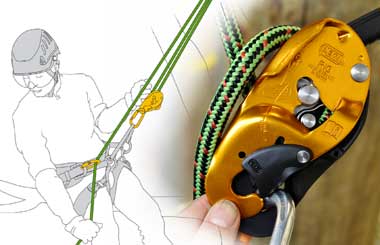According to the Petzl RIG User Instructions and the supplementary Product Experience sheet the RIG is certified to EN 12841-C but must be used in conjunction with a Type A back-up device attached to a second line to comply with the standard.
This configuration is not typical in tree work.
In fact, Petzl make no reference to tree work for the RIG in either of these two instructional documents - the closest we get is the pre-installed tower system for descending to the ground (the equivalent in tree work would be a base-anchored SRT ascent line installation).
However, if you look on page 15 of the 2012 Petzl Verticality-Lighting catalog you will find a line drawing depicting the use of the Petzl RIG in a single line work positioning configuration even though the RIG's EN certification relates specifically to other height safety applications.
Let's recap: the Petzl RIG User Instructions and supplementary Product Expereince sheet clearly state the RIG is only compliant with EN 12841 when it is used in conjunction with a back-up line.
Contrary to this, the 2012 Petzl catalog indicates usage of the RIG in a single line work positioning configuration without such safety procedures in place.
Does this mean Petzl are over-riding the EN certification and giving their stamp of approval for the use of the RIG in single line tree work?
The answer is (probably) yes.
This is just another example of the complexities and ambiguities faced by aerial arborists today.
The Petzl RIG has a couple of other features which fly in the face of conventional tree climbing wisdom.
The carabiner attachment point is double-acting, a lot like the double-snap found on the end of some wire core lanyards.
Once you flick the 'snap' open the plate swings sideways and the climbing line is released with relative ease (this is not such a problem when the RIG is used as certified - with a secondary back-up line).
Despite these shortcomings the Petzl RIG has its place and you are bound to see more and more applications in tree work.

